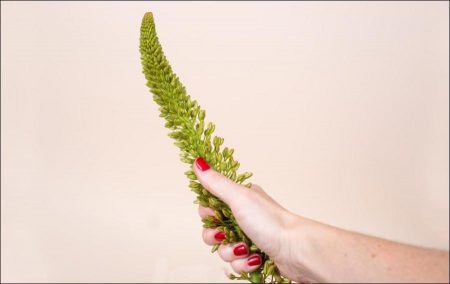Why have scientists been slow to understand women’s sexuality, asks Rachel Nuwer.
What do women want? It’s a question that’s stymied the likes of Sigmund Freud to Mel Gibson. It has been at the centre of numerous books, articles and blog posts, and no doubt the cause of countless agonised ponderings by men and women alike. But despite decades spent trying to crack this riddle, researchers have yet to land on a unified definition of female desire, let alone come close to fully understanding how it works.
Still, we’ve come a long way from past notions on the subject, which ran the gamut of women being insatiable, sex-hungry nymphomaniacs to having no desire at all. Now, scientists are increasingly beginning to realise that female desire cannot be summarised in terms of a single experience: it varies both between women and within individuals, and it spans a highly diverse spectrum of manifestations. As Beverly Whipple, a professor at Rutgers University, says: “Every woman wants something different.”
We’re also coming to realise that male and female desire might not be as dissimilar as we’ve typically assumed. For decades, researchers bought into society’s belief that men have higher desire than women, since large studies consistently confirmed that finding. But more recent evidence reveals that differences between the sexes may actually be more nuanced or even non-existent, depending on how you define and attempt to measure desire. Some studies have even found that men in relationships are as likely as women to be the member of the couple with the lower level of sexual desire.
Past studies typically asked participants things like, “Over the last month, how much desire have you experienced?” When that question is posed, men do typically rate higher than women. But when the question is revised to ask about in-the-moment feelings – the amount of desire experienced in the midst of a sexual interaction – scientists find no difference between men and women. “This challenges our gender-related stereotypes about women being passive and not sexual,” says Lori Brotto, a professor of obstetrics and gynaecology at the University of British Columbia, and a private practice psychologist. “It also suggests that the factors that elicit desire in the moment might be equally as potent for men as for women.”
Others have found that women’s desire waxes and wanes with their menstrual cycle. “During women’s peak period of arousal, which occurs around ovulation, their sexual motivation is just as strong as men,” says Lisa Diamond, a professor of psychology and gender studies at the University of Utah. “Women don’t have lower sexuality than men. What they have are more variable patterns.”
This makes sense when thinking in terms of sex’s ultimate purpose: making babies. “Biology, which helps to drive reproduction, is an element of sex,” says Anita Clayton, chair of the Department of Psychiatry and Neurobehavioral Sciences at the University of Virginia. “It’s only in modern times that reproduction and sex are uncoupled.”
Previously, doctors had also assumed that the male sex hormone testosterone could be linked to female desire. In fact, it probably does not play a major role: several studies found no difference in testosterone levels in women who have high levels of desire and those diagnosed with a desire disorder. Despite this finding, women continue to request testosterone as a treatment for low desire, and doctors continue to prescribe it – often based on lab tests that erroneously use male levels of testosterone as a marker for what normal levels of that hormone should look like in a woman’s body.
Other research finds that testosterone and desire are linked only very indirectly, and that sexual activity has more of an effect on hormone levels than hormones do on whether someone actually desires sex. Sexual thoughts increase testosterone in women, as does sexual jealousy. “Thinking that sex just comes out of testosterone is such a falsehood,” says Sari van Anders, an associate professor of psychology and women’s studies at the University of Michigan, Ann Arbor, whose lab led the investigations. “Hormones have such small – if any – influence on desire.”
Even the variety of feelings during sex itself had gone unrecognised: women do not necessarily experience the same progression of excitement, plateau, orgasm and resolution that men do. Instead, the order is often shuffled. Sex itself can be the trigger for desire and arousal, or a first orgasm might lead to the desire for a second. “Often for women, genital, physical arousal precedes the psychological experience of desire,” Diamond says. “Whereas in men, desire precedes arousal.”
Desire, however, does not necessarily entail the wish to engage in sex with another person. Each woman (and, indeed, man) is different in terms of preferences, and those preferences may change at different times. Women may sometimes or always desire solitary masturbation, and some can even experience orgasm purely through thought, with no physical contact at all. Others may desire sexual activity with a partner, but without penetration or without ending in orgasm. “When people say they have a high desire for a partner, they might actually mean they want to be close to someone, or relieve their boredom, or experience something or someone new, or experience orgasm,” van Anders says. “My guess is that desire depends on the context, the person, the time of their life, relationship factors and who’s available.”
The range of turn-ons women report are extremely varied as well. Some prefer G-spot stimulation, or for their partner to suck on their toes. Others like to dominate, or simply to be held – the list goes on and on. “Usually clitoral stimulation is equated with males, but we’re documenting in the laboratory that women respond to a lot of other things, too,” says Whipple. “We need to educate women and give them permission to experience what they find pleasurable, and to let them know that they don’t have to fit into a single model of desire and sexual pleasure.”
That diversity is now reflected in porn – a relatively new development. Though women have always been involved in the industry, until the 1980s porn was largely geared toward a male audience. When home videos became available, however, porn – previously only shown in theatres – became more easily accessible to women as well as men. Picking up on this, female directors began creating porn marketed towards women, which often took a softer approach, with story lines lacking in violence, for instance.
The industry has continued to evolve, however, with porn made by and consumed by women including erotic Victorian vampire sequences, all-male gay porn, monster porn and more. “It’s much more diverse now, because people realised that women are also perverts,” says Laura Helen Marks, a postdoctoral fellow in the Department of English at Tulane University. “Women have really taken up the camera and are responding to the diversity of female desire.”
Visits: 108




